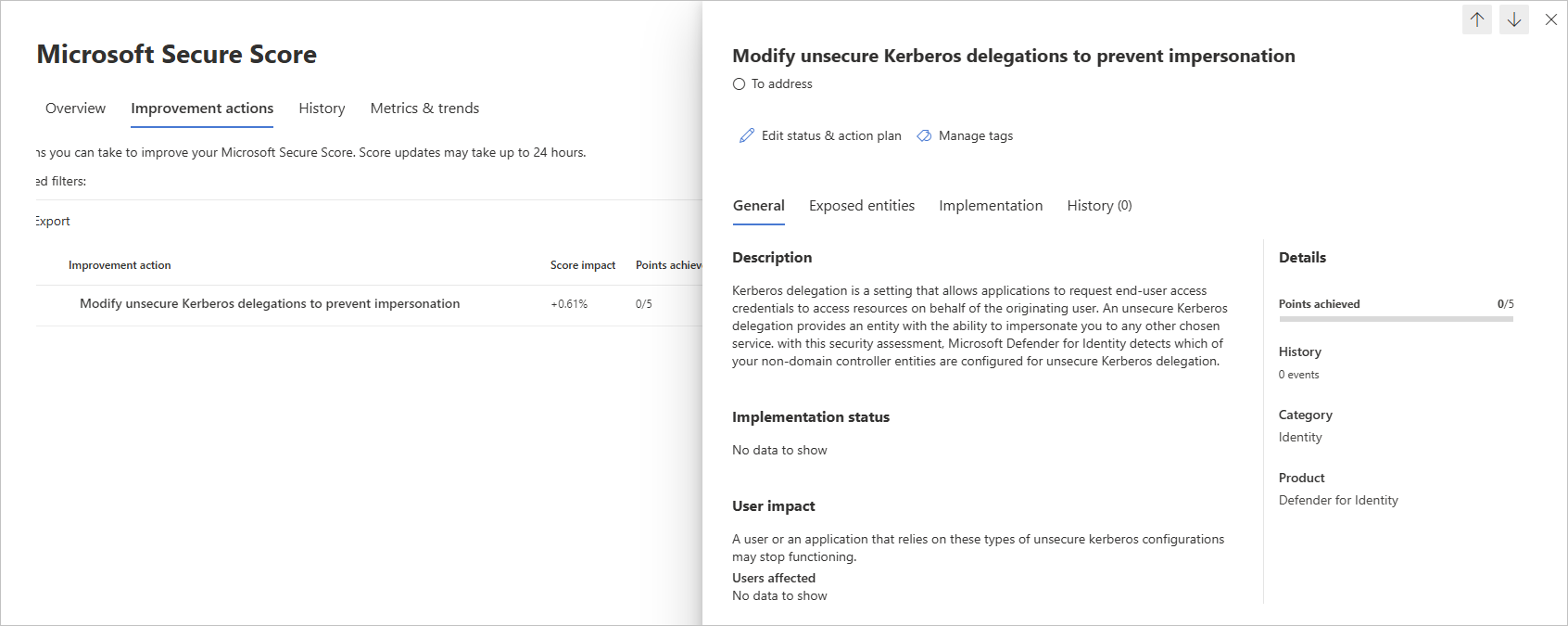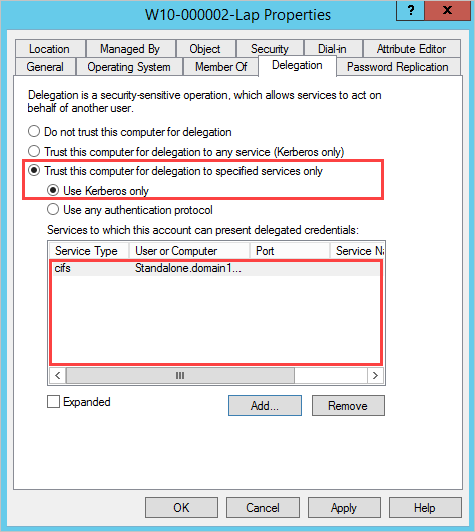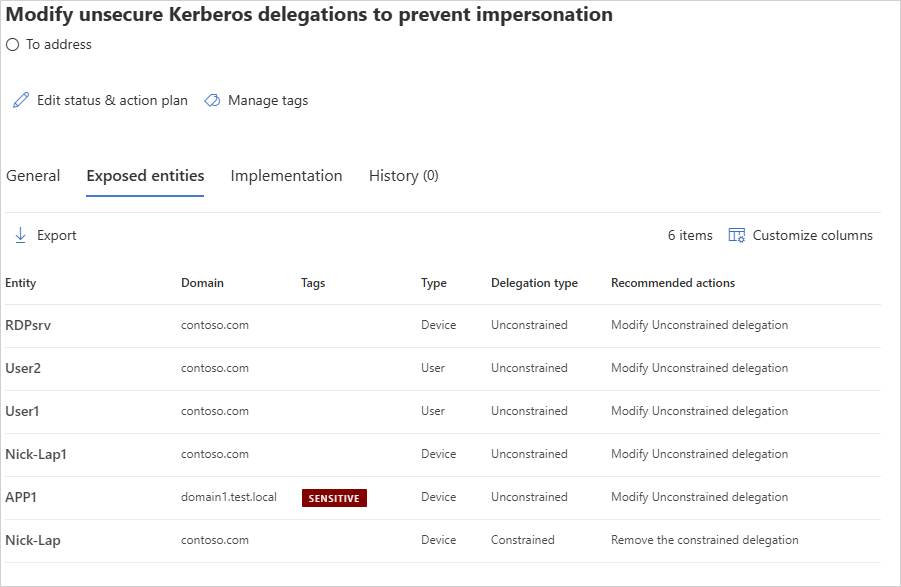Note
Access to this page requires authorization. You can try signing in or changing directories.
Access to this page requires authorization. You can try changing directories.
What is Kerberos delegation?
Kerberos delegation is a delegation setting that allows applications to request end-user access credentials to access resources on behalf of the originating user.
What risk does unsecure Kerberos delegation pose to an organization?
Unsecure Kerberos delegation gives an entity the ability to impersonate you to any other chosen service. For example, imagine you have an IIS website, and the application pool account is configured with unconstrained delegation. The IIS website site also has Windows Authentication enabled, allowing native Kerberos authentication, and the site uses a back-end SQL Server for business data. With your Domain Admin account, you browse to the IIS website and authenticate to it. The website, using unconstrained delegation can get a service ticket from a domain controller to the SQL service, and do so in your name.
The main issue with Kerberos delegation is that you need to trust the application to always do the right thing. Malicious actors can instead force the application to do the wrong thing. If you are logged on as domain admin, the site can create a ticket to whatever other services it wishes, acting as you, the domain admin. For example, the site could choose a domain controller, and make changes to the enterprise admin group. Similarly, the site could acquire the hash of the KRBTGT account, or download an interesting file from your Human Resources department. The risk is clear and the possibilities with unsecure delegation are nearly endless.
The following is a description of the risk posed by different delegation types:
- Unconstrained delegation: Any service can be abused if one of their delegation entries is sensitive.
- Constrained delegation: Constrained entities can be abused if one of their delegation entries is sensitive.
- Resource-based constrained delegation (RBCD): Resource-based constrained entities can be abused if the entity itself is sensitive.
How do I use this security assessment?
Review the recommended action at https://security.microsoft.com/securescore?viewid=actions to discover which of your non-domain controller entities are configured for unsecure Kerberos delegation.

Take appropriate action on those at-risk users, such as removing their unconstrained attribute or changing it to a more secure constrained delegation.
Note
While assessments are updated in near real time, scores and statuses are updated every 24 hours. While the list of impacted entities is updated within a few minutes of your implementing the recommendations, the status may still take time until it's marked as Completed.
Remediation
Use the remediation appropriate to your delegation type.
Unconstrained delegation
Either disable delegation or use one of the following Kerberos constrained delegation (KCD) types:
Constrained delegation: Restricts which services this account can impersonate.
Select Trust this computer for delegation to specified services only.

Specify the Services to which this account can present delegated credentials.
Resource-based constrained delegation: Restricts which entities can impersonate this account.
Resource-based KCD is configured using PowerShell. You use the Set-ADComputer or Set-ADUser cmdlets, depending on whether the impersonating account is a computer account or a user account / service account.
Constrained delegation
Review the sensitive users listed in the recommendations and remove them from the services to which the affected account can present delegated credentials.

Resource-based constrained delegation (RBCD)
Review the sensitive users listed in the recommendations and remove them from the resource. For more information about configuring RBCD, see Configure Kerberos constrained delegation (KCD) in Microsoft Entra Domain Services.